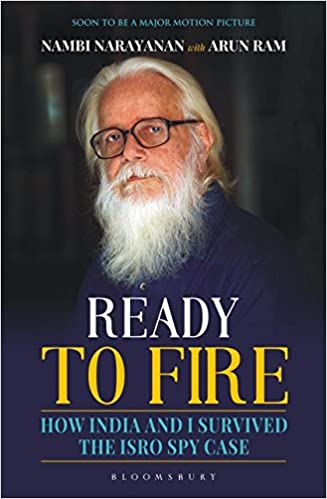The main source for this article is Sri Nambi Narayanan’s autobiography and supported by additional references that are listed at the end of this post. The article does not present a comprehensive historical or scientific review of Nambi Narayanan’s many achievements. Rather, the content reflects a student’s limited understanding of some challenging subject matter and an attempt to learn from the insights shared by an extraordinary personality. The opinions and errors in the article belong to the author alone.
‘Ready to Fire‘ is available at many popular bookstores.
Early Life
Padma Bhushan Sankaralingam Nambi Narayanan was born on Dec 12, 1941, in Nagercoil, Travancore State. He was the first boy in the family after four girls. His father ran a successful business of Copra, Coir, and Oil in Thiruvananthapuram and had relocated to Nagercoil to start a new oil business. Nambi did his elementary schooling at the Parakkamadai Elementary School and shifted to the Desiya Vinayaka Devasthanam a few years later and topped the school in his Standard-10 exams. He repeated this feat in his pre-university course at the South Travancore Hindu college. He loved Mathematics from an early age and developed a natural interest in engineering. Unfortunately, he fell seriously ill during the college admission time and enrolled in a BSc Mathematics course for a year before joining the Thayagarajar College of Engineering in Madurai in June 1960. This was a college blessed with world-class professors.
Nambi Narayanan’s father passed away within five months of his joining college. At age 19, Narayanan was unsure if he should continue his studies or take over his father’s business and stay with his family. His sisters were strong personalities who made it clear that young Nambi must focus on his studies. He had earned a merit scholarship which took care of all educational expenses while he pursued his Mechanical Engineering degree. Narayanan had two close friends in college, Lawrence, who later became a colonel in the Indian army, and Chandran who would become an important ISRO colleague.
First Signs of the Nambi Effect
After being elected as the joint secretary of the student union, young Nambi faced a challenge of bring Thiru. Kamaraj as chief guest to a college function as desired by the college founder Thyagaraja Chettiar. This was opposed by a section of the college that supported Annadurai’s DMK. They wanted a flowery orator and not a school-dropout; so what if he was a remarkable achiever who brought the mid-day meal scheme to TN schools? Nambi Narayanan recalls how the wisdom of Kamaraj was earned not through book parsing but from the varied experiences of life. Clearly, this Dravidianist predilection for hyperbole over substance hasn’t diminished in 60 years. Narayanan was able to persuade a reluctant Kamaraj to attend the function and notes in his autobiography that the great Tamizh leader won over the audience including the naysayers with “his simplicity and clarity of thought”.
The faculty of his college also played a big role in shaping Narayanan’s future. Among others, he fondly recalls his training under Prof. Kothandaraman who ensured that each of his students completed their engineering project (axial flow compressor) end-to-end, from design to fabrication to the final functional testing. Toward the end of his course, Narayanan obtained gradual school admission at both Princeton University and Caltech but decided to stay in India and be close to his ailing mother.
Early Career
Nambi Narayanan’s first job was as a trainee assistant at the Deccan Sugars and Akbari Company, a sugar factory of Parry & Co, in Trichy, Tamil Nadu. He had to oversee the entire process from the crushing of the sugarcane to the final end products. Here too, one gets to see Narayanan’s multidisciplinary talents- analytical thinking, business acumen, and an eagerness to obtain a more hands-on experience. In went the future Rocket Scientist into the Bagasse (Sugarcane pulp) pit, something that no white-collar employee there had done before. His reasoning is important for every student to internalize: “Getting a feel of what the lowest grade worker does gives you an idea of wholesomeness. It works in a bagasse pit; it works in a rocket assembly clean room.”.
It can only be Karma that brought Nambi Narayanan into ISRO (Indian Space Research Organization) after he quit his sugar factory job and moved back to Thiruvananthapuram.
When Nambi Narayanan met Abdul Kalam
“… then came the monthly groceries from AT Ganapathiya Pillai’s shop in Chaalai Bazaar that was to solve my problem. One of the items was wrapped in a newspaper which I was about to throw into the bin when a two-column advertisement on it caught my eye. Thumba Equatorial Rocket Launching Station (TERLS) in Trivandrum …” – September 4, 1966.
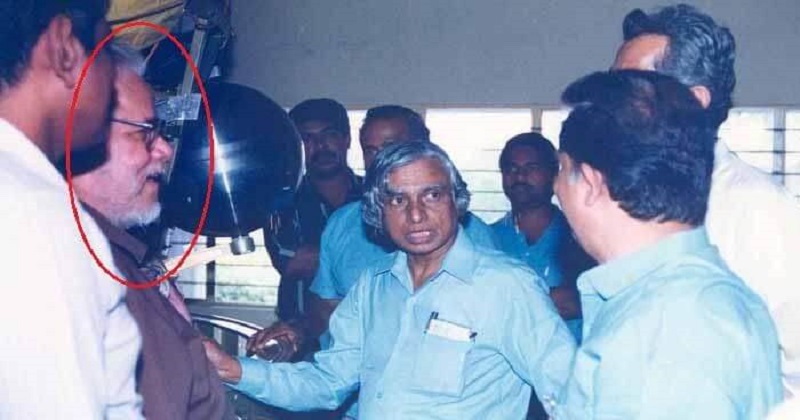
Narayanan noticed the advertisement a day after the last date to apply, yet such was the lack of red tape in Vikram Sarabhai’s organization, his application for the position of technical assistant (design) was not summarily rejected. He was able to convince TERLS to accept his application. Narayanan wanted to learn more about the job and the people he would be working with if he got accepted. He recalls: “some of the scientists involved in TERLS were staying in a lodge. As I was entering the lodge, one of the residents, a man in a pale blue shirt and dark trousers was coming down the stairs. I thought he must be involved in the Thumba project and introduced myself as an applicant. ‘I am A P J Abdul Kalam, rocket engineer,‘ he said.” APJ Abdul Kalam would later be part of the panel that interviewed Nambi Narayanan and brought him on board. Kalam was especially impressed by Narayanan’s engineering college project work in Madurai. Narayanan joined India’s first space science team on September 12, 1966. A more dramatic life-saving interaction with India’s future President and Bharat Ratna is depicted in the opening sequence of Madhavan’s ‘Rocketry’ movie. Abdul Kalam was among the few invitees who attended the simple wedding ceremony of Nambi Narayanan and Meenakshi Ammal a year later. The couple were blessed with two children, Sankar, and Geetha.
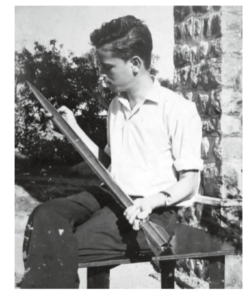
Nambi Narayanan’s autobiography reveals the enormous influence that Vikram Sarabhai had on him after he joined TERLS/ISRO. There would be leaders of unimpeachable integrity after Sarabhai, including the great Satish Dhawan and UR Rao, but none who could match the long-term vision of Sarabhai. Eventually, ISRO also fell prey to office politics, and this acted as a catalyst in the ISRO spying case in the 1990s. Despite internal friction, ISRO sustained its ability to deliver and retain public trust. We have to thank the many ISRO men and women whose work ethic remain true to the original vision of Vikram Sarabhai. This much is apparent from Nambi Narayanan’s book.
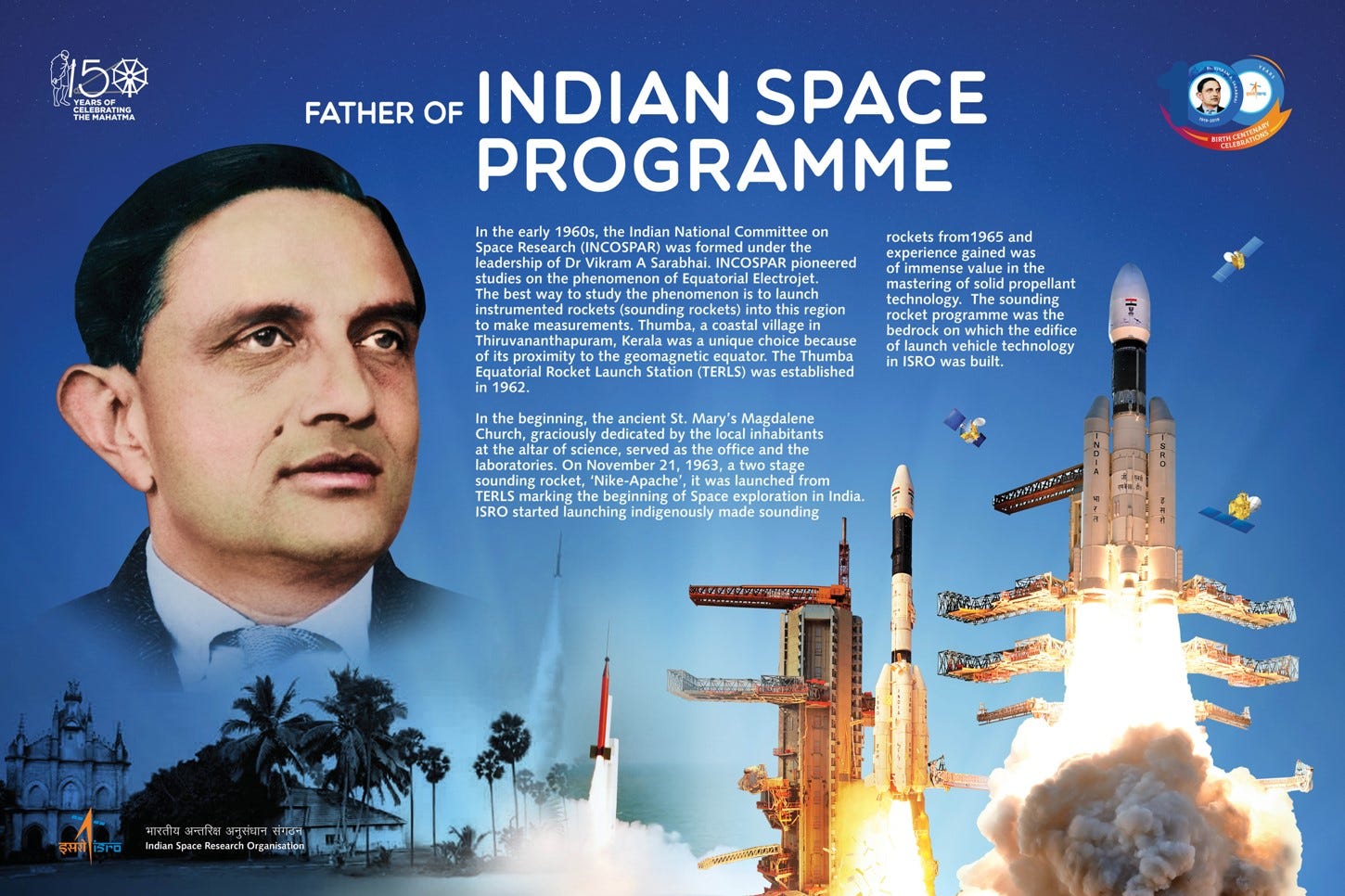
Liquid Propulsion Systems
Nambi Narayanan must be recognized for his single-minded goal of developing liquid propellant rocket engines at ISRO. He differentiates between liquid propellants that are earth storable (at room temperature), while cryogenic engines [4] employ propellants that are liquified and stored at an extremely low temperature.
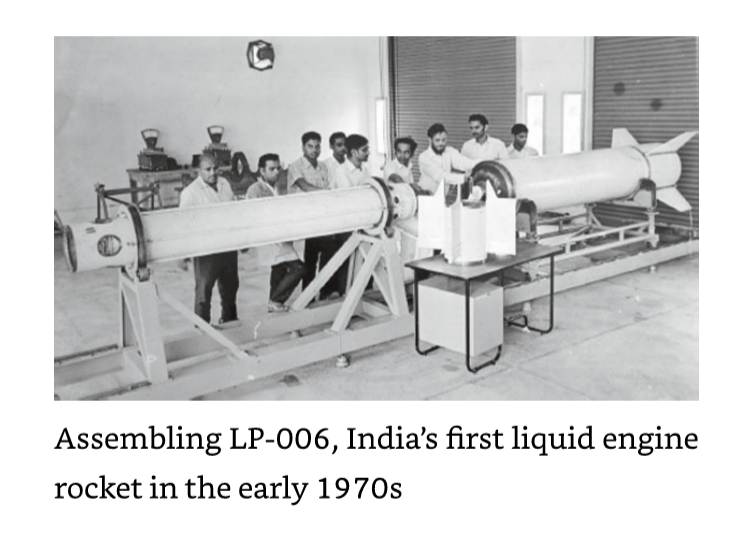
What’s so special about liquid propulsion systems (LPS)? Among other attributes, the strength and efficiency of rocket engines is rated on their ‘specific impulse’ which makes LPS more attractive (see the brief footnote at the end of this post). Young readers can also review this IIT-Madras lecture series [2].
Kalam and Narayanan were members of India’s first space team who branched out into different areas. Kalam took the route of solid fuel rockets and later, missiles at DRDO and achieved success in both areas (Rohini, SLV-3, and the Agni missiles) [1, 9]. On the other hand, Nambi Narayanan’s contributions were in the area of LPS.
In his book, Narayanan notes Sarabhai’s initial reluctance to venture into this area while his own belief in the potential of LPS remained rock-solid (irony unintended). ISRO’s focus was on solid fuel- it was lower risk with immediate reward, including dual-use for missile launching. LPS was viewed as a high-risk alternative, which few in ISRO were willing to bet on. A natural question that any layperson would ask is: why are we even talking about risk? Weren’t these all solved problems by the 1960s, with well-established mathematical formulas, drawings, books, and all the know-how available? After all, the Saturn V rocket used in the Apollo moon missions was powered by a cryogenic engine. Why couldn’t ISRO quickly put together the desired rocket configuration using the available know-how? This question is an important one in the context of the ISRO espionage case and is addressed at the end of this article.
Madhavan’s biopic does a great job of covering Narayanan’s single-minded pursuit of LPS, starting with his stint at Princeton University (thanks again to Sarabhai slashing through red tape) in August 1969. This was a heady time period at the peak of the cold war. Public interest in space exploration was sky high. America, spurred by President Kennedy’s inspirational 1961 ‘moon shoot speech’ had beaten the Soviets to the moon and taken the lead in the space race. This result is also relevant to our story for the USSR thereafter gave up on their moon exploration program and simply mothballed their (more than 250?) cryogenic engines that never flew [1, 5].
Narayanan’s NASA Fellowship and MS admission in Princeton was related to the study of solid fuels but though his positive attitude and skills of persuasion, he became a student of Professor Luigi Crocco. Prof. Crocco was a top professor in chemical rocket propulsion (closer to LPS) who did not accept any students at that time for personal reasons. Narayanan convinced Prof. Crocco and learned from him at his residence and completed his MS in less than 11 months and returned to India in 1970.
Narayanan had spurned lucrative offers from US organizations that were trying to poach him. He came back to serve India and work on LPS in an environment that was at best lukewarm to such an initiative. It is easy to be critical of Nambi Narayanan’s outspoken go-getter personality and his inability to suffer fools gladly. But then, sweet-talking people who focus on winning popularity contests are never going to decolonize India and take her forward in a strategically important field dominated by the western powers. Narayanan and his colleagues successfully tested smaller scale two-stage rockets using liquid fuel. Despite this, skepticism persisted about their ability to build a genuinely scalable engine and LPS received limited funding even though Narayanan had the support of Sarabhai and later, Satish Dhawan.
Noticing Narayanan’s firm belief in liquid propulsion, Vikram Sarabhai, who had great awareness of the global developments in the field, directed him to recce the new Space Science facility of Rolls Royce that housed a hydraulics laboratory in Cumbria, Scotland. UK was shutting down its space program (outsourcing it to NASA) and this amazing new laboratory, which Narayanan describes as “a Fluid Engineer’s dream place”, was put up for 400 million Pounds. Narayanan traveled to Cumbria in 1971, charmed and befriended the administrator there and then made an audacious request – give it to India for free. Narayanan was startled when the request was granted with the stipulation that India must bear the shipping costs. The biopic does not show what happened afterward.
Sarabhai passed away (killed?) during this time. The laboratory equipment arrived in India, but India’s premier space organization did not have the land to reassemble and revive the extraordinary laboratory. In its disassembled form, it ended up in a few ISRO apartments in Trivandrum. Narayanan, the custodian of the equipment, watched the ‘engineer’s dream’ turn into a nightmare as it was ‘systematically plundered’ for spare-parts by scientists:
“.. one asking for a recorder, another taking away a pressure sensor, a third one snatching a flow meter. After giving up on setting up the facility on a new campus, I silently let these go, in a heartrending way, that it was probably better at least some of the hardware were put to use than let it gather rust. There were times when it also occurred to me that some people who did not want ISRO giving thrust to liquid propulsion systems would have derived great please in seeing what was happening. Before my eyes, the Rolls Royce hydraulic laboratory was cannibalized. “.
A more tragic story is how Tamil Nadu’s inebriated Dravidianist minister ‘interacted’ with Vikram Sarabhai and squandered a golden opportunity for TN to host ISRO’s rocket launch pad. TN’s loss was Andhra’s gain and today it is the Sriharikota range that is world famous and deservedly so. But what was the price paid by the nation for the minister’s disgraceful conduct? Narayanan calculated that every launch from the chosen location in Nagercoil would have saved ISRO enough fuel to launch a 30% larger payload.
A heart-warming sequence in the biopic is Nambi Narayanan’s stint in Vernon, France (1974-1978) along with more than 50 other ISRO scientists. Working alongside experts, the group absorbed nearly one hundred and fifty priceless man-years of hands-on experience with liquid propulsion systems. This cash-free contract with SEP France (Societe Europeenne de Propulsion) was finalized through the efforts of another famous personality, TN Seshan, IAS, who had an administrative role in the organization. The benefits would come later and culminate in the development of India’s own reliable and trustworthy Vikas Engine (Narayanan notes that apart from its Sanskrit meaning, Vikas was also named for Vikram A. Sarabhai). In France, among other things, Narayanan’s team was able to identify and resolve a major problem with the ‘upper stability margin’ of SEP’s Viking engine and earned the respect of their engineers who initially underestimated them.
It is another frustrating story that despite being ready, Narayanan and his team were only able to test the Vikas Engine in 1985. At one point, Narayanan had enough and told Satish Dhawan that he was quitting. A single make-or-break test was finally sanctioned to be conducted in France since India did not have the testing capability. Nambi Narayanan grabbed that chance and ensured a successful test of the Vikas Engine. However, it would take another eight years to celebrate its first successful launch.

It is worth noting at this point that contrary to the claim in Wikipedia that Narayanan took all the credit for himself, his book recounts the contributions of numerous people inside and outside ISRO to India’s space program. This long list includes not only the first three ISRO chiefs who supported him, but also his colleagues, administrators, assistants, businessmen, and skilled technicians: Fitters like Sukumaran Nair, and Anandan who was also an expert at hand-sealing joints, and welders like Samuel Raj whose expertise stunned the French and who turned down their huge paycheck to return to Mother India and his modest salary and train more Indians. These are the hidden skills that make magic work. But for Narayanan’s book, these stories of skill and sacrifice would have remained unknown.
The most famous overseas assignment of Narayanan, we now know, happened in Russia, when the USSR was breaking up. These events have been well documented in interviews and the biopic. It is sufficient to note here that Narayanan and the ISRO team pulled off another coup and were able to bring cryogenic engines along with a limited ‘technology transfer’ into India in 1994.
This story actually began in 1975 when Narayanan and his colleague spotted a KVD-1 Soviet engine at a Paris Aerospace Exhibition where it was (deliberately?) labeled as some ‘RD-100’. This fact was confirmed by an old Soviet scientist there who also mentioned that its specific impulse was a barely believable 461 seconds, far superior to anything the Americans had at that time. This engine was first test fired in 1967 and held on to its record for the highest specific impulse until the end of the century [5].
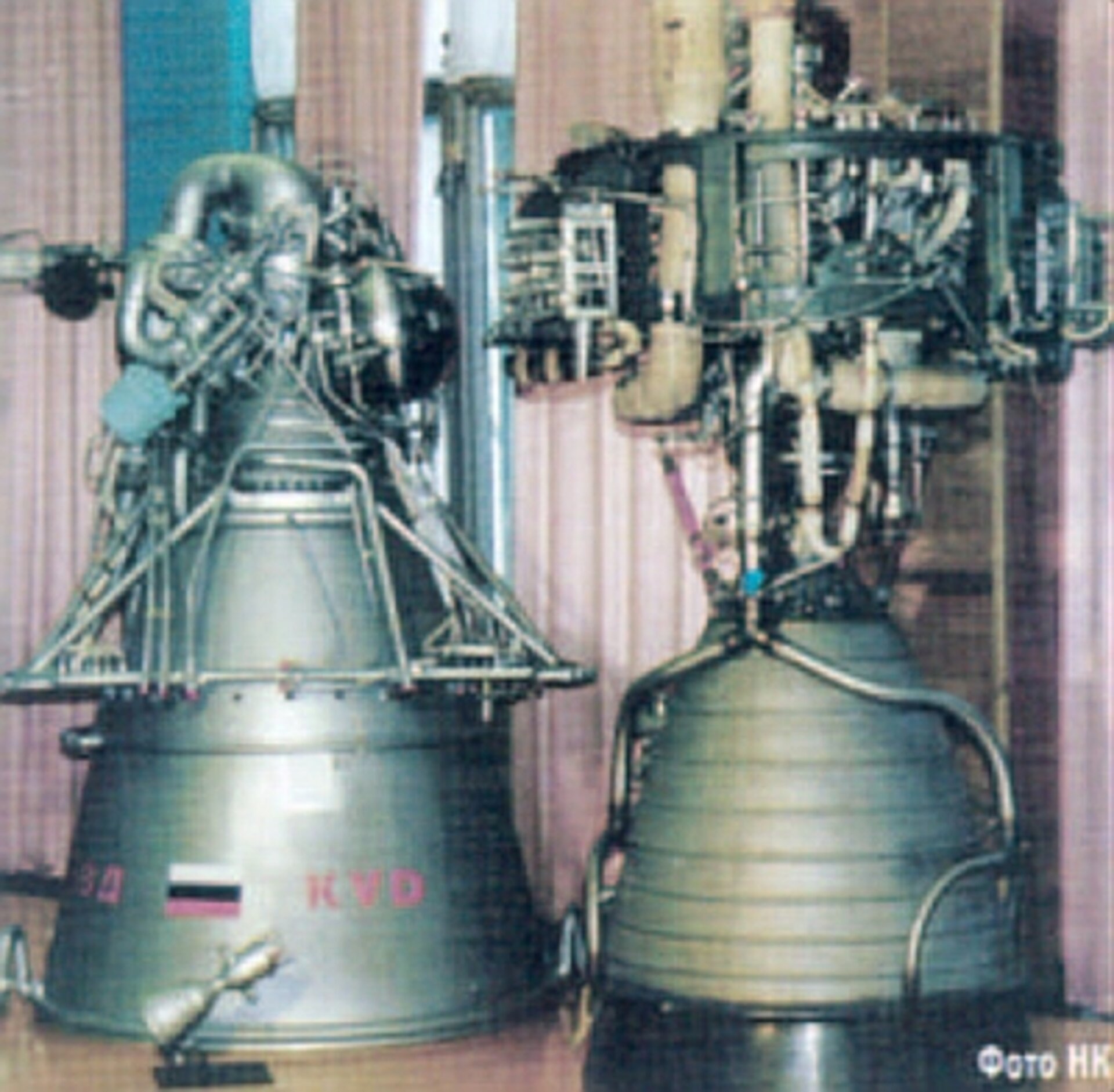
Fast forward to the 1990s. The Vikas Engine went operational in 1993 and India was in the process of completing a cryogenic engine technology transfer agreement with the Russians. Being able to indigenously develop, test, and deploy such engines would signal India’s entry into the lucrative commercial market of large payload launches. An elite club that was the sole preserve of the large powers. America promptly blocked the original deal by misusing MTCR after India passed on an American offer to deliver the same.
This was a move driven purely by commercial interests as the US was long aware that cryogenic engines were practically unviable for missile launches. Why? Narayanan pointed out in a 2013 video interview [4] that it required 48-72 hours to prep a cryogenic system prior to launch. This non-transferability of cryogenic engine technology to missiles was also strongly raised by India at that time [5].
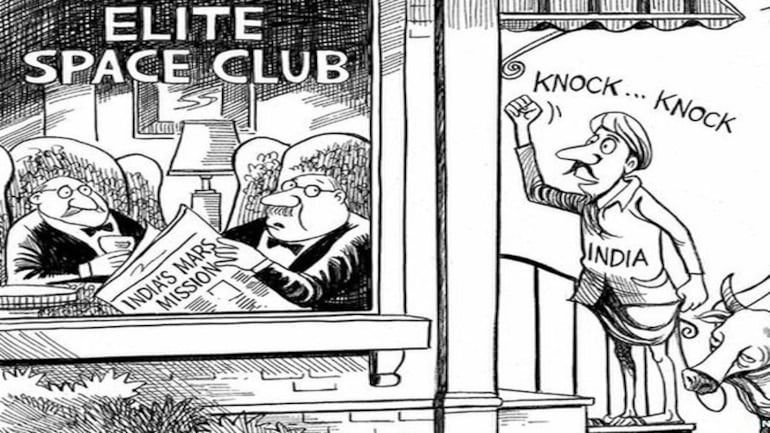
Eventually, seven KVD-1 engines along with documents and equipment were brought legally to India by four Ural Airlines flights in 1994. Air India turned a blind eye to national interest and backed out lest an unhappy Uncle Sam takes away ‘their’ lucrative New York landing rights. The first three flights arrived in Trivandrum by July 1994, with the last flight scheduled for late December.
In October 1994, ISRO announced its first success with a rocket that could be used for commercial satellite launches. Just when it seemed that everything was falling into place, charges of espionage were laid against multiple scientists and key ISRO partners involved with Cryogenic technology transfer in October 1994. Nambi Narayanan, the main target, was arrested on November 13, 1994. They were accused of passing on ‘secret drawings’ and papers to Pakistan using Maldivian intermediaries [1, 4]. After a long and tortuous battle, Narayanan was fully exonerated by the courts. The deep trauma suffered by his devout wife Meenakshi during this time is a most heartbreaking section of his book. Although his stance was vindicated, ISRO’s cryogenic program was set back by more than a decade – it was ‘mission accomplished’ for the masterminds of the plot. Nevertheless, India would eventually develop an indigenous cryogenic engine, thanks in part to Narayanan’s pioneering efforts.
ISRO ‘Spy’ Case: Know-Why versus Know-How
“.. our frontier past and our industrialized present both incline us toward a preoccupation with technique, with know-how rather than know-why”. — Dwight Macdonald, American social critic [12].
” .. “know-why” is understanding the context and the value of your actions. Why are you doing this? Why are you implementing the techniques and tools you have learned? What are you trying to get out of this? It’s only the balance of “know-how” and “know-why” which will create the desired outcome.” – [11].
Nambi Narayanan’s 2013 interview with Madhu Kishwar [4] was perhaps the first time a general audience had the opportunity to absorb his brilliant insights into the fraudulent case. Temporarily setting aside many other loopholes in the investigation conducted by the Intelligence Bureau (IB) and Kerala police, we return to a critical point that Nambi Narayanan has emphasized throughout his book and in multiple interviews. The simplest way (at least for this author) to realize why the case was spurious and lacked Pramana is to appreciate the difference between “know how” and “know why”. Not knowing this is one of the reasons why experienced IB and police officers ended up looking foolish in this sad episode.
“Anyone with a basic understanding of rocket science knows even if the drawings are given, an engine cannot be made without long years of development, guidance and extensive tests. In other words, you can’t make a rocket engine based on know-how—you need the ‘know-why’. If rockets were built merely with drawings, there is no reason why every space-faring nation is making rockets its own way and not copying from others“. – Nambi Narayanan.
Raghu Garud at the University of Pennsylvania, in a widely cited paper [7] on strategic management has provided useful working definitions of know how/why/what. Let’s understand these terms through his example (emphases in bold are mine):
“.. consider a computer that comprises many components that together provide utility to users. Know-why represents an understanding of the principles underlying the construction of each component and the interactions between them. Know-how represents an understanding of procedures required to manufacture each component and an understanding of how the components should be put together to perform as a system.
.. Without an adequate appreciation of the underlying principles, changes in one element of the system may affect the performance of the entire system in a manner that is difficult to predict beforehand “.
Recall the ‘O-rings‘ element of the cryogenic-engine powered NASA Space Shuttle Challenger in 1986?
Know-how cannot substitute know-why, it can only complement it. ISRO has devoted all the time, effort, skill, and talent to accumulate know-why by working hands-on with and learning from experts. The same cannot be obtained through a disembodied review of manuals, drawings, or YouTube Videos. It can take decades. India’s first indigenous aircraft carrier is being delivered to the Indian navy as I am writing this. The work began in 1999. There are no short cuts to ‘Make in India’. The importance of know-why is not something that arm-chair experts in social media can grasp.
These concepts are not alien to our culture. Bharatiya and Tamizh Kalacharam, our inimitable traditional craft and knowledge systems, and sacred art forms have sustained for millennia, being directly passed down from master to apprentice, mother to daughter, father to son, Guru to Sishya. Deep culture pays attention to know why, a shallow one cannot think beyond technique and know-how.
To cite an example from culture and art, the know-how for making the Thanjavur Veena exists [10] but to make Veenas of sustainably high quality requires a high degree of know-why. Similarly, there once was a know-how book published by Popular Mechanics in 1950 that told you how to make a Stradivarius Violin [12]. However, it has been noted that when it comes to making Steinway Pianos or Stradivarius Violins, a lack of know-why is the reason why rivals are unable to consistently create instruments of comparable quality [7]: “knowledge of why something works can therefore form the basis for sustainable competitive advantage as causal ambiguity aids inimitability..”.
To replicate and consistently achieve the same high quality without ‘working with the masters’, as Sri Nambi Narayanan puts it, is just not possible. The Vikas Engine delivered every single time, launch-after-launch, without a single failure. This is the value of know-why.
It is mind-boggling that some top investigators of a national agency proceeded under the assumption that drawings can be smuggled into Pakistan and turned into missiles with cryogenic engines. Senior IB official MK Dhar repeats in his autobiography [13] that: “They also did not appreciate the argument that peaceful space rocketry and militarised rockets used the same technology. Pakistan had an abiding interest in Indian rocket technology especially development of cryogenic engine technology.”
MK Dhar [13] also states that “Pakistan were in the midst of developing indigenous rocket technology, fuel and guidance systems. It was interested to acquire knowledge about cryogenic engine, which India was on the threshold of developing.” This claim is also fictitious as Narayanan has pointed out that India was not even remotely close to developing one. A 2010 book that surveyed the state of rocket development in Asia and South America [6] did not mention Pakistan in a list that included Iran and North Korea. Today, nearly thirty years after the alleged attempt to acquire the rocket know-how, Pakistan has gotten nowhere and perhaps does not even care. We know why.
Dhar’s last paragraphs are devoted to the ISRO case that derailed his final years at IB. The concluding words of Nambi Narayanan’s book are reserved for the late Mr. Dhar. They are in agreement that a full multi-agency investigation is required to expose the key conspirators.
Conclusion
In March 1994, Nambi Narayanan had put in another request, this time to UR Rao, to quit after the success of an upcoming PSLV launch, and yet again to the next ISRO chairman, Kasturirangan in August 1994. This last request was finally accepted but the fabricated case intervened three months later. He was reinstated into ISRO at its Bengaluru headquarters on July 1st, 1996. Five space science and technology domain experts: Satish Dhawan, UR Rao, Roddam Narasimha (IISc), Yash Pal (TIFR, UGC), and S Chandrashekar (ISRO, IIM), as well as TN Seshan were signatories to an open letter in 1997 asking for an end to the harassment of Nambi Narayanan and remarked that India’s strategic programs were no longer free of outside interference. The final judgment on the ‘spy case’ came in April 1998. He continued the fight in the courts, this time seeking compensation from the government. Narayanan officially retired in 2001. He was awarded the nation’s third highest honor, the Padma Bhushan for his contributions to science and engineering in 2019. In 2021, the Kerala State Government finally paid 1.3 Crore Rupees in damages. A biopic on his life, ‘Rocketry: The Nambi Effect’ was made by the acclaimed Tamizh and Indian movie artist, Ranganathan Madhavan, and released in July 2022 to rave reviews.
GSLV Mark-II, India’s largest launch vehicle when it was operationalized, employs an indigenously developed upper stage cryogenic engine. It has delivered several successful launches to date since January 2014 [8], nearly 20 years after the 1994 deal with Russia.
Padma Bhushan S. Nambi Narayanan is a living embodiment of a ‘Make in India’ spirit that refused to be broken.

Footnote: Isp (Specific Impulse)
Isp = thrust produced / fuel weight flow [3], which simplifies to a time unit (seconds) and makes it easy to compare the efficiency of different rocket engines.
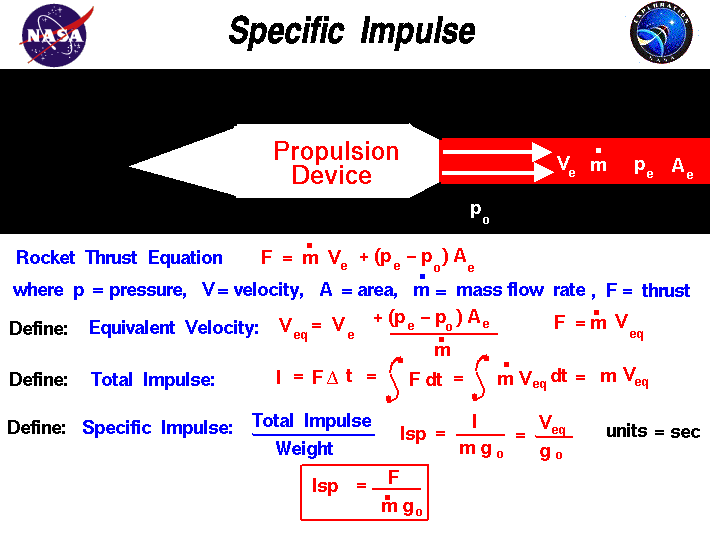
Nambi Narayanan: “Then there is the case of energy levels, called specific impulse in rocket science. A solid propulsion engine has a maximum specific impulse of 240 seconds, while a liquid engine has up to 295 seconds. A cryogenic engine has a specific impulse of more than 460. A higher specific impulse or energy level meant the need for lesser fuel or more payload mass to orbit.”.
References
- Nambi Narayanan and Arun Ram. Ready to Fire: How India and I Survived the ISRO Spy Case. Bloomsbury India. 2018.
- K. Ramamurthi. Rocket Propulsion: Video Lecture Series. IIT Madras. Circa 2013.
- NASA.gov. Beginner’s Guide to Rockets: Specific Impulse. Accessed July 26, 2022.
- Madhu Kishwar and Nambi Narayanan. “Shreekumar’s victim ISRO’s Nambi Narayanan spoke to Madhu Kishwar on 26/8/13 – YouTube”. 2013,
- Brian Harvey. Russia in Space: The Failed Frontier? Springer. 2001.
- Brian Harvey. Emerging Space Powers: The New Space Programs of Asia, the Middle East and South-America. Springer Praxis. 2010.
- Raghu Garud. On the distinction between know-how, know-why, and know-what. Advances in Strategic Management (14). 1997.
- ISRO.gov.in. Geosynchronous satellite launch vehicle (GSLV). Accessed July 26, 2022.
- APJ Abdul Kalam and Arun Tiwari. Wings of Fire: Autobiography of Abdul Kalam. Universities Press. 1999.
- B. Kolappan. From a log of wood to a symbol of melody. The Hindu. 2011.
- ezeep.com. The Difference Between Know-How & Know-Why. Accessed on July 26, 2022.
- Dwight McDonald. Against The American Grain. Random House. New York. 1962.
- Maloy Krishna Dhar. Open Secrets: The Explosive Memoirs of an Indian Intelligence Officer. 2018.
